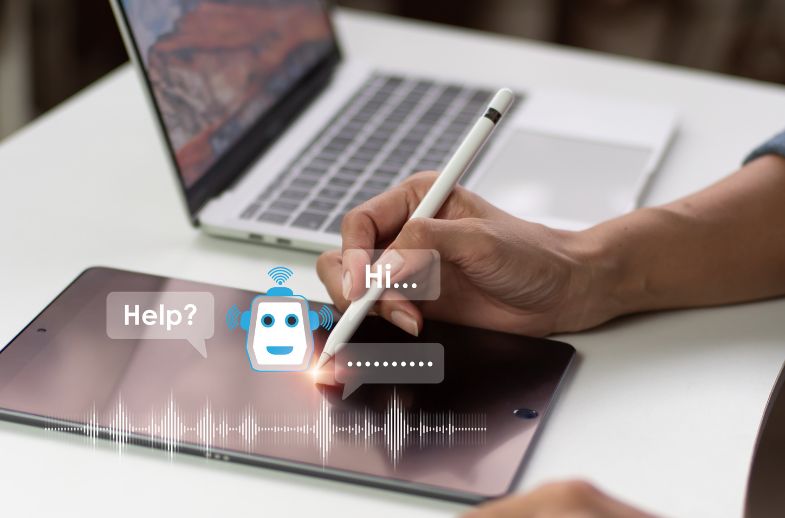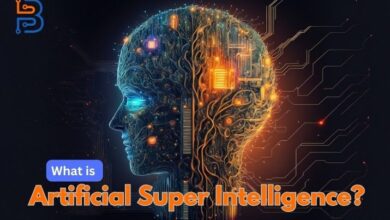The Top Generative AI Trends to Watch Out in 2024

Generative AI emerged as a transformative technological trend of 2023 to capture the attention of tech enthusiasts and mainstream audiences due to its capacity to generate remarkably human-like content. With technology behemoths like Meta, Microsoft, and Google investing their seemingly boundless resources into revolutionary innovations in 2024. However, Generative AI possesses significant potency and will play a crucial role in making the transformative capabilities of AI more accessible to a broader audience. Everyone needs to stay informed about upcoming developments so they can thoughtfully assess the potential impact on our lives.
This blog post will explore the top generative AI trends that watch out for in 2024.
Generative AI Trends to Watch Out in 2024
As we enter the fourth industrial revolution, the rapid evolution of artificial intelligence (AI) persists, with generative AI taking the forefront in driving innovation and transformation. Anticipate thrilling developments in 2024 and beyond, poised to reshape industries and revolutionize creative processes. Here, we delve into the current trends in generative AI that demand attention this year:
- Emergence Of Multimodal AI Models
- Small Language Models (SMLs)
- The Rise Of Autonomous AI Agents
- AI PCs Super Cycle
- The Age of Bring Your Own AI (BYOAI)
- Google’s Search Generative Experience
- Generative AI Integration in Siri

Emergence Of Multimodal AI Models
GPT-4 from OpenAI, Mistral, and Meta’s Llama 2 all exemplified the progress made in large language models. The technology extends its capabilities beyond just text through multimodal AI models. This enables users to combine different types of content, like images, text, audio, and videos, to prompt and generate new content. In 2024, there is anticipation for substantial advancements in multimodal AI, leading to a transformation in the capabilities of generative AI. Advancements in these models go beyond conventional single-mode functions by integrating various data types, like images, audio, and language. This shift towards multimodal models is expected to make AI more intuitive and dynamic.
Small Language Models (SMLs)
Keep an eye on the emerging trend in 2024, as there is a notable shift towards Small Language Models (SLMs). Since many of the latest large language models (LLMs) now feature billions of parameters, there is a concurrent emphasis on developing smaller, more efficient models known as Small Language Models (SLMs). Microsoft’s Mistral 7B and PHI-2 are notable examples in this regard. SLMs are reshaping the definition of a potent language model. Generally, models with fewer than 100 million parameters are categorized as small or medium-sized (SLMs), quite different from massive models surpassing 100 billion parameters. Certain SLMs are so simplified that they have as few as 1 million parameters.
The Rise Of Autonomous AI Agents
In 2024, monitoring autonomous AI agents is an important factor These self-governing software programs are crafted to accomplish particular goals with minimal human involvement. Their capacity to produce content independently marks a notable advancement beyond conventional prompt-driven AI systems. Autonomous entities acquire knowledge from data, adjust to novel scenarios, and autonomously make decisions. OpenAI’s specialized GPTs showcase this advancement in artificial intelligence, demonstrating the effectiveness of these entities in functioning without continual human oversight. Autonomous agents hold the potential to enhance customer experiences across diverse industries significantly.
AI PCs Super Cycle
In 2024, the PC market is expected to undergo a significant transformation that is propelled by a “super cycle” of laptop and PC upgrades fueled by advancements in artificial intelligence. Microsoft’s advancement of Intelligent PCs and AI assistants such as Copilot is fueling this upswing, signifying a significant move towards computing integrated with artificial intelligence. AMD and Intel recently revealed processors equipped with AI capabilities. The AMD Ryzen 8040 and Intel Ultra Core processors are notable for incorporating a built-in Neural Processing Unit (NPU) specifically designed to improve the efficiency of data processing and machine learning tasks. These processors facilitate energy-efficient AI acceleration by dividing tasks among the NPU, CPU, and GPU.
The Age of Bring Your Own AI (BYOAI)

At first, corporations such as JPMorgan Chase, Microsoft, Samsung, and Apple were cautious about restricting employee usage of ChatGPT over worries about the possibility of internal data and training data breaches. Nevertheless, a more accepting approach to generative AI within the workplace is expected this year. The recognition that many workers are already exploring AI applications in their professional and personal spheres propels this shift. A notable trend developing in this setting is the idea of “bring your own AI” (BYOAI). In this scenario, employees leverage widely used or experimental AI services, like Dall-E, ChatGPT, or other software embedded with AI, to boost their efficiency in business-related activities.
Google’s Search Generative Experience
When ChatGPT was introduced by OpenAI in 2022, the creator of Gmail declared that conventional Search was on the verge of obsolescence. Google shifted its focus towards its LLM Bard (now Gemini) and actively promoted users to direct their queries to Gemini rather than resorting to traditional “Googling.” Subsequently, the Generative Search Experience emerged. In this innovative approach, Google actively identifies the most pertinent information related to a query and generates a personalized response for the user in the form of a snapshot. This snapshot is then showcased on the Search Engine Results page. Notably, the information within the snapshot leads directly to the cited websites to present a more efficient method than vying for the top position on SERPs.
Generative AI Integration in Siri
By integrating Generative AI into Siri, Apple’s virtual assistant gains the ability to generate language patterns that closely mimic human expression dynamically. Unlike conventional scripted responses, Siri transcends limitations by comprehending contextual cues and subtle nuances in language, tailoring its responses accordingly. Apple’s engineers wield immense potential when they leverage Siri with a tool like ChatGPT. Picture engaging in a conversation with Siri about your upcoming travel plans. Instead of receiving merely step-by-step directions, Siri could provide a comprehensive overview, including real-time updates on driving conditions and traffic along the route, and suggest the optimal path based on individual driving preferences.
Conclusion
The landscape of generative AI is set to undergo remarkable transformations in 2024, with essential trends shaping the future of artificial intelligence. The year promises groundbreaking advancements, from the emergence of multimodal AI models and the rise of small language models to the integration of generative AI in everyday tools like Siri. The age of autonomous AI agents, the anticipated AI PC super cycle, and the growing acceptance of “bring your own AI” in the workplace further highlight the pervasive influence of generative AI across diverse industries. As we enter this new era, staying abreast of these trends will be essential for understanding the evolving dynamics of AI and its profound impact on our daily lives.






